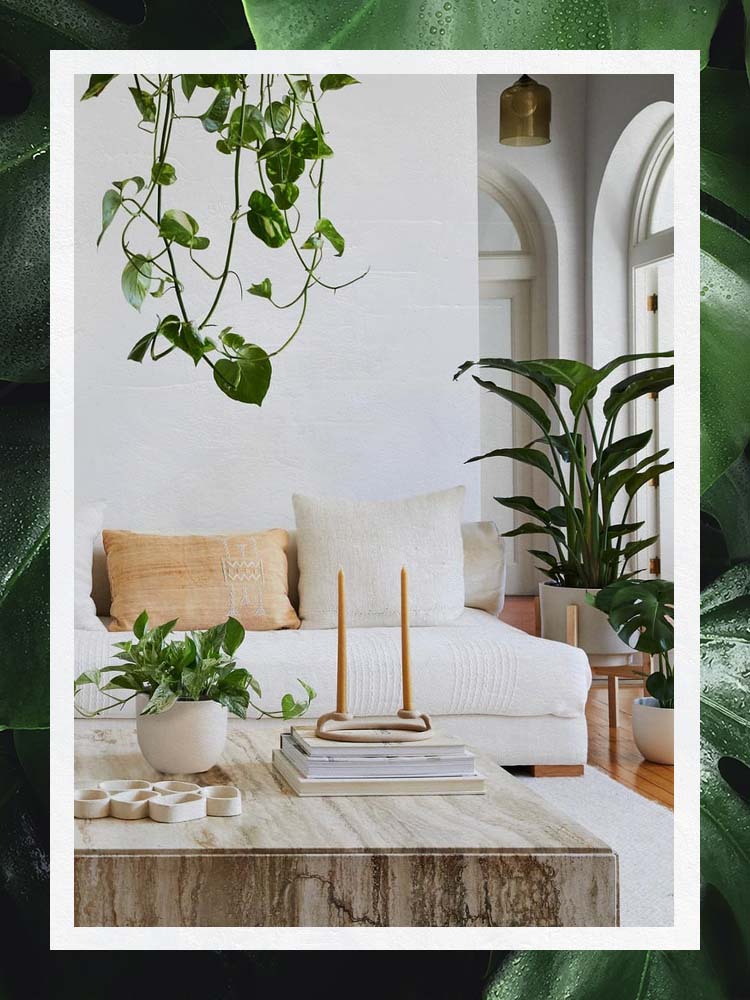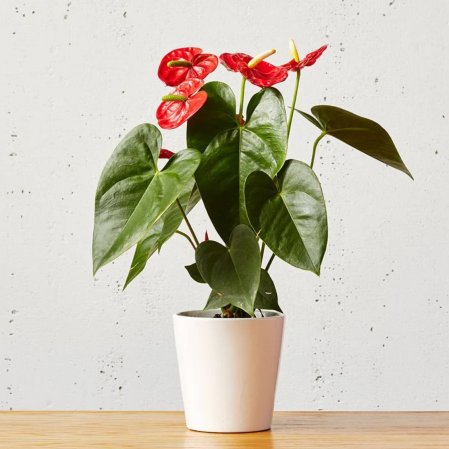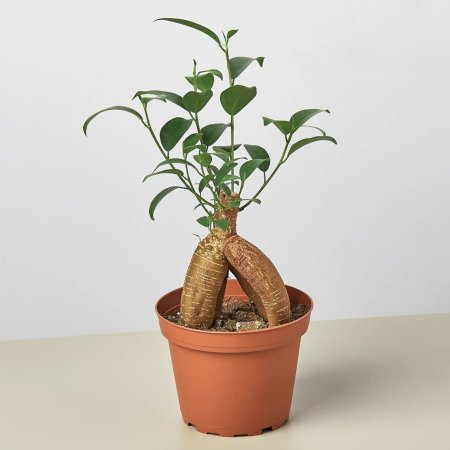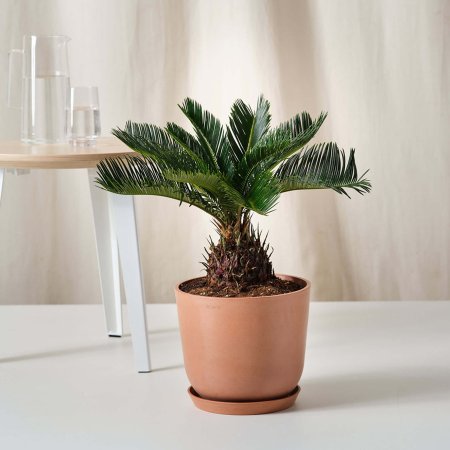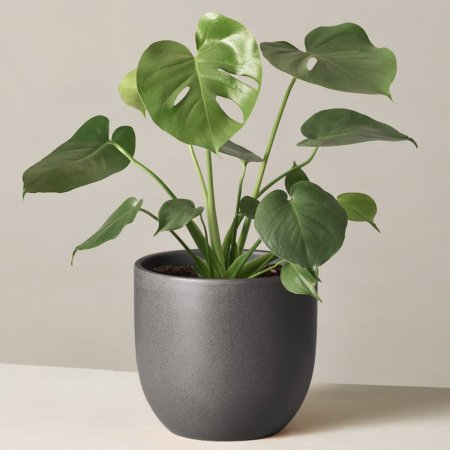We may earn revenue from the products available on this page and participate in affiliate programs.
Reading up on Domino’s shopping guides is like having your own personal product concierge. We do the tedious part—deep-dive research, hands-on testing, and tapping experts for advice—so all you have to do is hit “add to cart.” That’s why we call them Simply the Best.
Whether you’re hoping to add a planter to the corner of a bright dining room or turn your bedroom into a lush green oasis, investing in a houseplant (or seven) is always a good design decision. Plants, after all, are so much more than one-of-a-kind statement pieces—they’re living things that can surround you with beauty and color.
But not all plants belong indoors, and some of the most notoriously difficult houseplants to grow and keep alive are those that require full sun. So we tapped plant-growing expert Darryl Cheng, creator of the über-popular House Plant Journal, for his tips and tricks in selecting a plan that works for your space and amount of sunlight. Cheng is quick to point out that if you purchase a plant that is labeled “full sun,” this actually means that it needs six or more hours of direct outdoor sunlight per day and very little shade. “This is the reason why people typically aren’t able to grow tomatoes indoors in front of what seems to be a sunny window,” he says. “No indoor space should be called ‘full sun’ unless it is a greenhouse. When discussing houseplants, we really should just call it ‘sunny’ or ‘lots of sun.’”
So we’ve rounded up our favorites—the ones that absolutely love bright light but can still thrive indoors (even during winter)—and while they can easily be transported outside during summer months to bask in extra rays, it’s completely not necessary. Here are the best plants for full sun.
Our Favorites
- Best overall: Red Anthurium Plant
- Best value: Ficus Ginseng
- Best unique: Sago Palm
- Best classic: Monstera Deliciosa
- Best succulent: Sempervivum Calcareum
Best Overall: Red Anthurium Plant
Best Overall
Shop NowSun requirement: Medium to bright light | Watering schedule: ½ cup weekly | Size: 14–18 inches
What we like:
- Wonderful pop of color
- Low-maintenance
Worth noting:
- Not safe for kids or pets
- Quite pricey
Why we chose it: Like a slick of red lacquer paint, this small houseplant makes a big statement.
Perhaps the most striking plant on this list, the red anthurium boasts bright red heart-shaped blooms that sprout above glossy green leaves, bringing an eye-catching dash of color that rivals many flower bouquets (and lasts longer, too). Plants.com offers a 30-day satisfaction guarantee, so if you’re unhappy with your purchase or it arrives damaged, you can receive a full refund. We’ll bet that won’t be the case, though: The red anthurium is hardy and quite difficult to kill, making it an ideal option for any first-time plant owner who may be intimidated by the care and upkeep often required for full-sun plants.
Best Value: Ficus Ginseng
Best Value
Shop NowSun requirement: Bright, indirect sunlight | Watering schedule: When soil is dry | Size: Approximately 8 inches, including pot
What we like:
- Exposed bulbous roots add character
- Great value
- Ships via UPS or FedEx
Worth noting:
- Will likely require pruning
- Not recommended for those with latex allergies or pets
- Smaller size frequently sells out
Why we chose it: This tropical cutie is a perfect touch of nature for budget plant shoppers.
The ficus ginseng, otherwise known as a pot-bellied ficus, is adorable, with thick roots that rise from the soil that almost resemble legs. For this reason, it may seem more like a pet than a plant, which would make this a fantastic gift for dog- and cat-allergy sufferers alike. Because this tree can grow up to 100 feet tall in its natural habitat, it will require an extra level of maintenance, but nothing fancy—just a quick pruning as it sheds its lower leaves and continues to climb for years to come.
Best Unique: Sago Palm
Best Unique
Shop NowSun requirement: Bright light | Watering schedule: Every 1 to 2 weeks | Size: 23–25 inches
What we like:
- Major tropical vibes
- Easy to maintain
Worth noting:
- Not kid- or pet-friendly
- Will shed lower leaves frequently
Why we chose it: Native to Japan, this plant looks less like a houseplant and more like something straight out of the rainforest.
We were practically giddy when we found this potted palm that looks like it was plucked straight off the set of Jurassic Park. And in fact, the sago palm has been around since before the Jurassic period. It brings a unique drama and texture that makes it seem otherworldly, with its dark green fronds and a spiky stem. This cheerful plant will get you through gray winters and rainy days, and Bloomscape’s thorough instructions and background information with each purchase make care easy.
Best Classic: Monstera Deliciosa
Best Classic
Shop NowSun requirement: Bright, indirect light | Watering schedule: Every 1 to 2 weeks | Size: 12–24 inches
What we like:
- Unique “Swiss cheese” leaves
- Gorgeous variety of planter colors
- Chic planter included
Worth noting:
- Plant sizes can range drastically
- May outgrow planter quickly
Why we chose it: Showcase the simplicity of this classic houseplant with an included sleek planter.
Monsteras, like the fiddle-leaf fig, are some of the most popular houseplants, thanks to their ability to grow quickly (about 2 feet in a year) and their straightforward upkeep. Although they love bright conditions, they can also thrive with indirect sunlight as long as they are exposed to it for most of the day. The Sill’s monstera may arrive without its signature leaf holes, but they develop over time, so exercise a bit of patience at first. Once they form, the shadows they cast on a sunny day are stunning and an element of design in and of itself.
Best Succulent: Sempervivum Calcareum
Best Succulent
Shop NowSun requirement: Bright light or partial shade | Watering schedule: When soil is dry | Size: 6 inches
What we like:
- Extremely easy to care for
- Recyclable and biodegradable packing materials
- Can buy and arrange multiple plants in one planter
Worth noting:
- Basic pots
Why we chose it: Succulents make a big visual impact with very little upkeep, and this sempervivum calcareum is no exception.
Cacti and succulents savor the sun, but they’re also some of the easiest full-sun plants to take care of. And while Succulents Box offers an impressive variety of funky and colorful options, we’re particularly fond of this magenta-tipped sempervivum calcareum, which looks more like a piece of art than something you’re likely to overwater after three days of ownership. We suggest repotting it in your own planter, though—perhaps a patterned design that will play off the plant’s natural geometric structure.
How We Chose These Products
Not many online houseplant companies ship nationally, so we researched our initial batch of retailers to ensure that most readers would be able to benefit from our recommendations. We then reached out to the companies for a list of their bright-light best-sellers, as well as their highest-reviewed options. This group provides a wide range of plants with all shapes, sizes, and colors represented. From there, we consulted various horticulturists, including Cheng, for their expert opinions on the best plants for full sun, determining which were likely to thrive in a sunny home environment. We ordered samples of each and chose the best of the best based on overall quality and growth potential.
Our Shopping Checklist
Plant Size
Most of the time, the size listed is how big your plant will be when it arrives. But if it’s cared for properly, it could double or even quadruple in height and width. Keep this in mind, as it is common for your houseplants to outgrow their pots or living space in as little as a year.
Environment
Whether you have low ceilings or small windows, or you’re simply unable to expose your plants to constant light, it’s important to take shade and sunlight into consideration before picking the right plant. While every option above thrives in bright sunlight, there are a few that can get by just fine if it’s indirect. The plant may not grow as quickly or vibrantly, but they’ll live happily and can add a pop of green to partially sunny corners.
Maintenance
All plants require varying degrees of care when it comes to watering, sun, and soil-changing schedules. There are also many houseplants—like our overall pick, the red anthurium—that have flowering times when they develop new buds and blooms. These range based on the plant, but can last for weeks and even months (unlike cut flowers that typically last a week). It’s also important to take disease and insect resistance into consideration. Some plants will be armed with natural immunity, while others will require constant soil and pot care to ensure the area remains fresh and clean. You also want to avoid overcrowding a plant space, as infected plants can easily transfer unwelcome visitors to their neighbors.
Ask Domino
We asked House Plant Journal’s Cheng some frequently asked plant questions. Here are his answers.
Q: Can full-sun plants get too much sun?
Not if you are keeping up with watering and fertilizing.
Q: Is morning sun or afternoon sun better for plants?
The idea that morning sun is gentle and afternoon sun is harsh is only relevant when trying to distinguish between the other outdoor light categories: part sun, part shade, and shade. If the plant’s light preference is full sun, whether it gets the six-plus hours in the morning or afternoon is irrelevant as long as you are keeping up with watering and fertilizing.
Q: Do full-sun plants need direct sunlight or just daylight?
Full sun equals six or more hours of direct outdoor sun.
Q: Can full-sun plants survive without direct sunlight?
Plants will try to make use of whatever light they can get, but you will be unhappy with how they grow if they don’t receive adequate light. They’ll grow tall and leggy with weak growth and lose most of their older leaves faster than usual. In other words, inadequate light is the sure path to a “sad” plant. To use another cliché: They’ll survive, but they won’t thrive.
The Last Word
Like adopting a puppy or a kitten, caring for a plant may take a bit of getting used to. But once it adapts to your environment, and your schedule adapts to its particular needs, the best plants for full sun will undoubtedly become a welcome part of the family.
